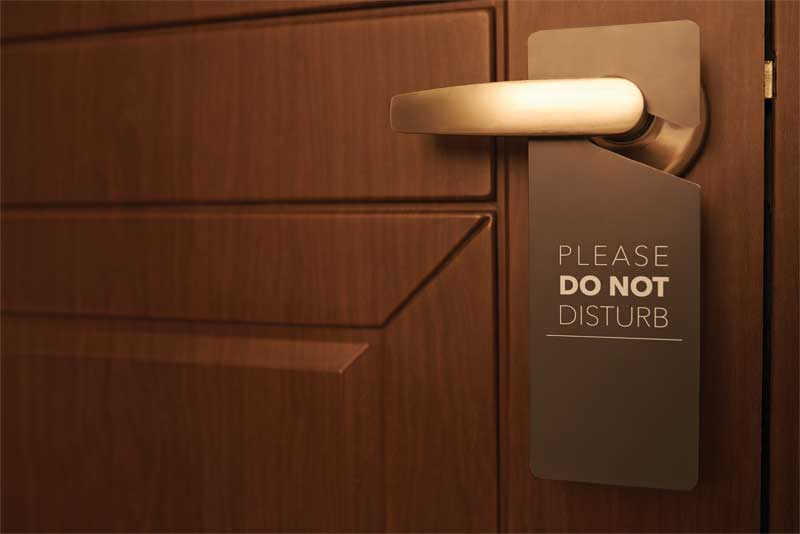
by Jerry Heid, AHC
When discussing how to secure the openings of a building, physical security commands the lion’s share of attention, with concerns about unauthorized access and fire typically Being at the forefront of any list of potential threats. However, a growing number of buildings are now being designed or retrofitted to protect occupants against a menace far more difficult to deter than any criminal. Hospitals, schools, office buildings, hotels, and even private residences are all taking steps to fortify their defenses against the pernicious effects of noise.
When compared to the dramatic impacts of a fire, it is easy to understand why noise has long been regarded as more of a nuisance than a serious threat. That said, in recent years, there has been a decided shift in awareness of the potential risks that can result from inadequate soundproofing, ranging from impaired learning in schools to slowed rates of patient recovery in hospitals. Privacy concerns have also become a major issue, particularly in hospitals required to comply with the Health Insurance Portability and Accountability Act (HIPAA) and ensure the confidentiality of communications with individuals.
As a result, several standards and code organizations have been incorporating noise mitigation into model building codes, and customers across a growing spectrum of industries are demanding better and more reliable acoustical control. However, as with any architectural specifications, the devil is in the details. Preventing the transfer of sound through door openings—specifically through clearances and gaps around doors—requires specialized expertise and quality materials to be successful.
Understanding sound transmission
To fully appreciate why sound control is so difficult to achieve, it is necessary to first understand the mechanics of sound transmission. Sound is simply vibrations moving in waves through the air. When these waves contact a door, some of the energy from the vibrations transfers
to it. The resulting vibrations in the door itself set the air in motion on the other side, creating more sound vibrations.
The volume of those sounds is measured in decibels (dB), and each 10-dB increase doubles the sound reception. In other words, a noise registering at 60 dB is twice as loud as a noise at 50 dB, but only half as loud as it would be at 70 dB. As a result, even the smallest increase in sound levels would be perceived as a dramatic change by occupants.
Another characteristic of sound waves that makes them difficult to minimize is their ability to travel through even tiny openings with very minimal loss. As illustrated in Figure 1, a gap of less than 3 mm (1/8 in.) may only allow a small amount of air to pass through, but it is still large enough to completely cancel out any noise-reduction benefits of an acoustic door.
STC ratings
The key to minimizing sound transmission is mass, particularly for lower-frequency sounds. The greater the mass, the less sound is transmitted through the barrier. A variety of materials are used to accomplish this in acoustical doors, and their effectiveness is measured in sound transmission loss (TL). The TL of a door is measured over 16 different frequencies, and the average of those values is used to determine the sound transmission class (STC) rating of the door. The higher the STC value, the better the rating, with 30 considered to be the industry minimum for an acoustical door (Figure 2).
It is important to understand STC values are not proportionate units of measurement. To continue reducing sound transmission—that is, to achieve increasingly higher levels of sound control—each 10-dB increment requires 10 times as much improvement as the one before. While door openings rated in the range from STC 30 to 40 are common, achieving a rating of STC 50 or higher is extremely difficult.
As sound doors are tested under optimal conditions, actual field performance varies. The testing process takes place in two different phases—fixed and operable. For the former, the doors are sealed in place, and sound is applied and recorded. This step is used to determine the STC rating of the door itself. However, the second phase of testing requires the door to be operable, and all sealants are removed before sound is applied. This results in a more-realistic assessment of the door’s performance in the field. Professionals should be aware some manufacturers will advertise their sealed-in-place STC ratings rather than this more-realistic operable rating. Selections based solely on the sealed-in-place ratings are likely to yield disappointing results for the end-user.



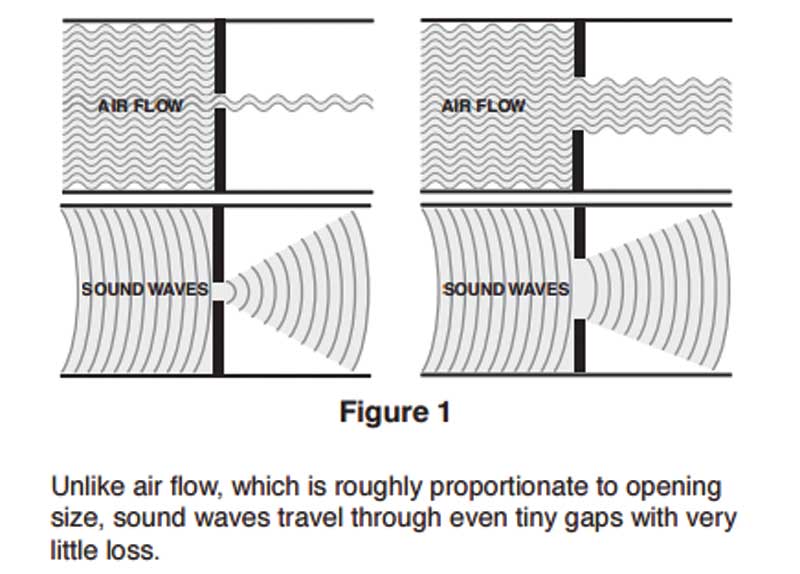
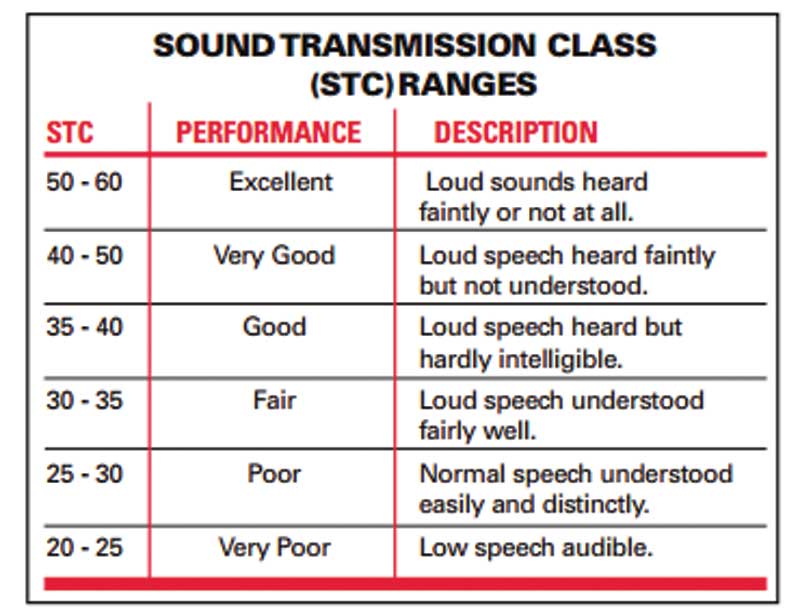
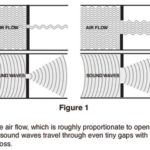
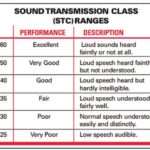


Glad to see that industries are taking noise reduction a lot more serious, as is important for the security and safety of many places.
Nice to see this here. Thanks for sharing this to us. Keep sharing this to us. Safety and security is important for every door. Keep updating the new things like this.
I am not sure how the municipal or local authorities will carry out audit of the retrofit necessary for specifically school indoor facilities like common sports arena or music hall to meet these new sound attenuation requirement !